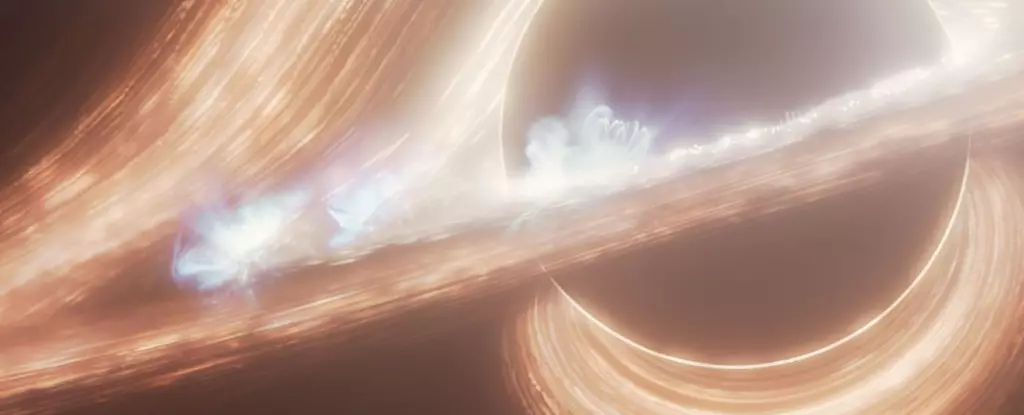The Milky Way galaxy houses a supermassive black hole known as Sagittarius A* (Sgr A*), which has long been a subject of intrigue in astrophysics. Unlike the more ravenous black holes that feast on surrounding gas in a more aggressive manner, Sgr A* presents a different kind of mystique. Recent observations made by NASA’s James Webb Space Telescope (JWST) have unveiled captivating phenomena surrounding this cosmic giant, revealing a dynamic environment marked by a series of energetic flares. These findings not only enrich our understanding of black holes but also portray an exciting and volatile cosmic stage at the heart of our galaxy.
In a systematic study that spanned across several months, scientists employed JWST’s Near-Infrared Camera (NIRCam) to observe Sgr A* for approximately 48 hours, segmented into eight- to ten-hour intervals. The anticipation was palpable; while researchers knew they would likely witness flares generated from the accretion disk, the sheer frequency of these cosmic displays was unexpected. The data indicate that Sagittarius A* emits an average of five to six significant flares each day, along with numerous smaller bursts that punctuate the cosmic background.
Farhad Yusef-Zadeh, the lead author of the study, noted, “Every time we looked, the activity seemed fresh and exhilarating,” highlighting the unpredictability of these stellar events. The flares exhibit a range of brightness and are devoid of any discernible regular pattern, creating an impression of a chaotic yet mesmerizing spectacle. This variability is not merely a whimsical aspect of cosmic observation but a tantalizing clue to the underlying physical processes at play within the vicinity of the black hole.
The research team posits that at least two different mechanisms contribute to this vibrant display of flares. The smaller bursts are believed to stem from turbulence within the accretion disk, effectively compressing the hot, magnetized gases residing there. This turbulence generates brief outbursts of radiation, akin to solar flares produced by our Sun’s magnetic interactions. Yusef-Zadeh emphasizes that, while the analogy is striking, the extreme conditions surrounding a black hole render these processes vastly more energetic and intricate.
On the other hand, the more substantial flares may occur due to magnetic reconnection events—collisions of differing magnetic fields that unleash torrents of particles accelerating to near-light speeds. Yusef-Zadeh compares these cataclysmic occurrences to sparks generated by static electricity, which serve as a dynamic nod to the astonishing forces at work around Sgr A*.
One of the most exciting outcomes from the JWST observations was the detection of a time delay between events captured at two different near-infrared wavelengths. The results indicate that flares seen at shorter wavelengths tend to brighten just before those observed at longer wavelengths, suggesting a nuanced interplay within the physics governing these cosmic emissions. Yusef-Zadeh elaborates, “We have never seen such a time lag before, and our observations hint at intricate processes occurring within the swirling accretion disk surrounding the black hole.” This delay may indicate that the particles emitted during the flares lose energy at varied rates depending on their wavelengths, thereby providing valuable insights into the dynamics of magnetic fields and particle acceleration.
With these groundbreaking findings in hand, the research community is keen to expand its observational efforts with JWST. The potential for extending observation times, such as up to 24 hours, promises an opportunity to enhance signal clarity by reducing noise interference. Yusef-Zadeh asserts the thrilling possibility: “An extended observational window could reveal even finer details of flaring events that currently remain obscured by noise.” This future endeavor will not only pave the way for understanding Sgr A* but could also unlock broader insights into the workings of black holes as a whole.
The study of Sagittarius A* is a fascinating exploration of the cosmic ballet where the extremes of physics manifest vividly. As our observational capabilities grow, so too does our understanding of the universe, reminding us that the most profound mysteries often lie just beyond our sight, awaiting discovery in the flickering lights of celestial flares.

